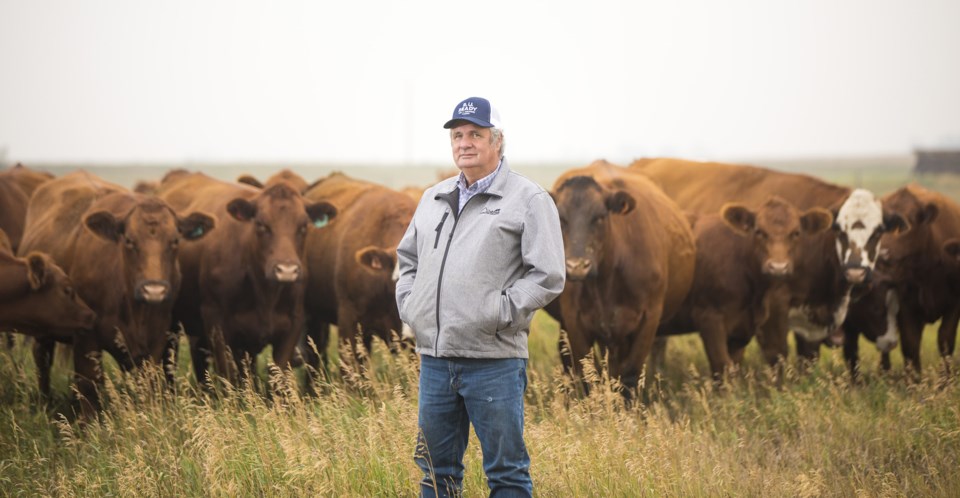A lack of rain in the Foothills could have some farmers looking for options to feed their cattle this year.
A dry, hot and windy spring has taken its toll on hay crops in most of southern Alberta, which are producing lower than average yields.
Phil Rowland, who keeps cattle in the Mazeppa area, said the hay crops look sparse.
“I’m spread out quite a bit – I have ground in the eastern slopes and we’re in pretty good shape up there,” said Rowland. “But out here by Okotoks, it’s dry.
“It’s not going to be a stellar hay crop, that’s for sure.”
Rowland said he may have to sacrifice one of his cereal crops as green feed, and if that’s not enough the rancher may be forced to destock some of his cattle.
“It’s expensive to feed your way out of a drought,” he said.
While the potential for excellent hay has probably passed, he said farmers aren’t completely out of luck for 2021. The cereal crops seem to be coming up well.
“Everything else looks good, but it needs water,” said Rowland.
There is still hope for the year, if enough rain falls in the next couple of weeks, he said.
Leroy Newman, who farms at Gladys Ridge, said his hay crops have produced less than one-fifth of 2020 yields, when a mix of rain and sun had crops booming.
He said there may not be enough to warrant cutting in some cases – but that doesn’t mean he won’t try.
“In some of the lower spots there might be some there, so you go,” said Newman. “Sometimes you turn the cattle out on it, but you get what you can.”
During times of drought he said most ranchers rely on last year’s stockpiled inventory. In his case, Newman saves extra rations and has about half of what he needs for 2021.
“Then you start using straw, and then other feed like pellets,” he said. “You just change the way you feed. Sometimes you downsize a bit in the herd.”
With many farmers and ranchers unable to produce hay in southern Alberta, he said feed prices in the lower half of the province could be through the roof this year. A lot of hay will be transported from northern Alberta, where there has been more rain.
On a recent trip to Innisfail, he noticed the ditches were three times bigger than hay crops in the south.
“They’re mowing it and I’m thinking, ‘That’s good hay, we’d give anything to have that much,’” said Newman.
Having to pay more for feed or sell of stock could impact cattle prices on the market as well, he said.
His cereal crops – wheat, barley, canola and peas – are looking fine for the moment but like Rowland said he’s waiting for the right rain to hit.
“We’ve had about an inch this spring, that’s it,” said Newman. “And our last big rain was in July last year. So we’re almost 12 months without really much precipitation – we’re in pretty dire straits here.”
Coun. Rob Siewert informed Foothills County council the situation is bleak for a lot of farmers in the southern portion of the municipality.
“Guys are getting rid of older cows and putting yearlings into feedlots, because the pastures are drying up,” said Siewert. “Even the well-managed pastures with lots of carryover stopped growing two weeks ago.”
He said the industry could be in big trouble if it doesn’t see significant rain in the short-term forecast.
Jeff Porter, manager of agricultural services for the County, said there have been some systems predicted to come through with rain, but they haven’t amounted to much more than a few afternoon showers.
“Nothing we’re seeing is going to be anything substantial, unfortunately,” said Porter. “But like everybody says, just wait five minutes and the weather will change.”



